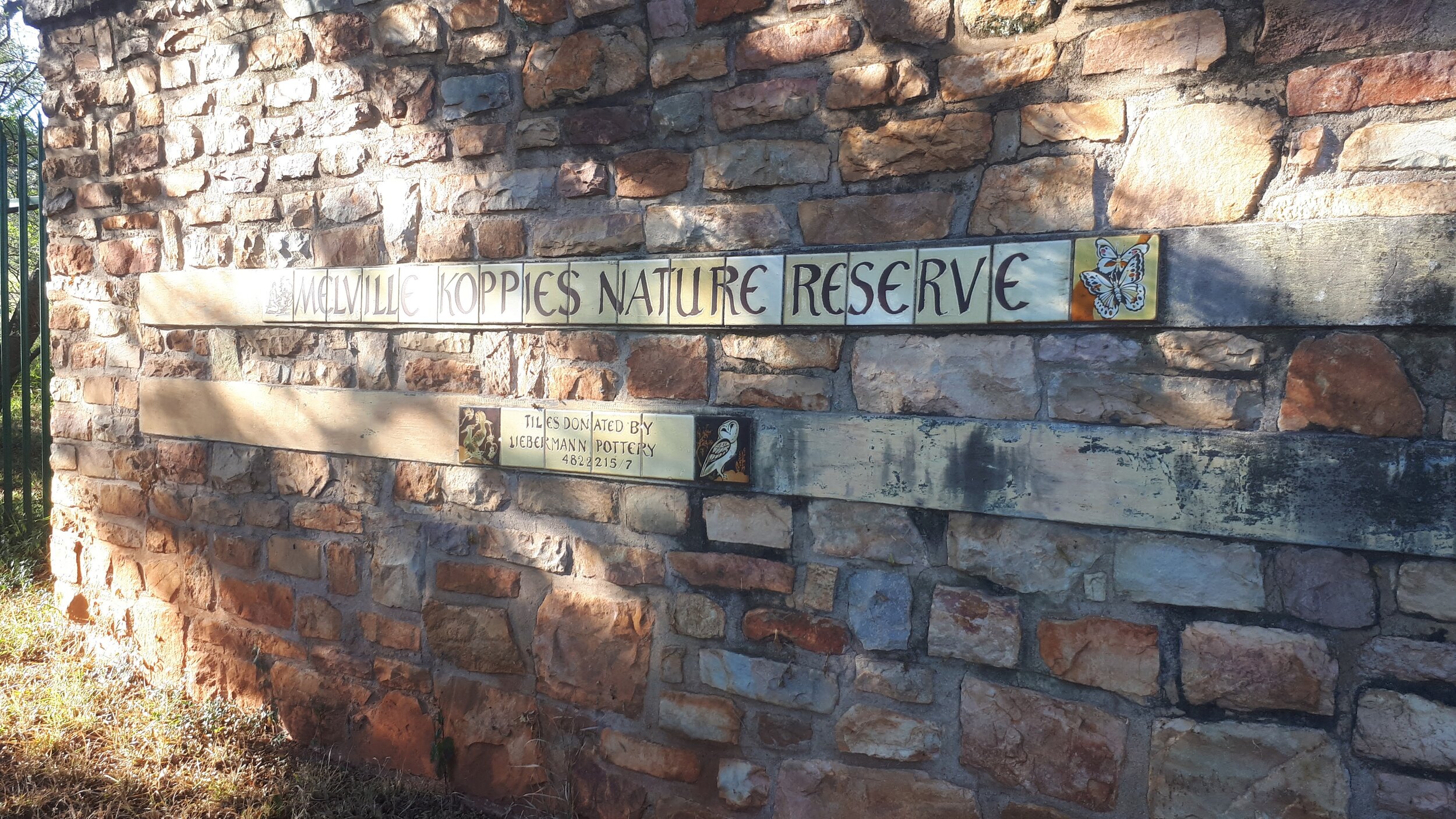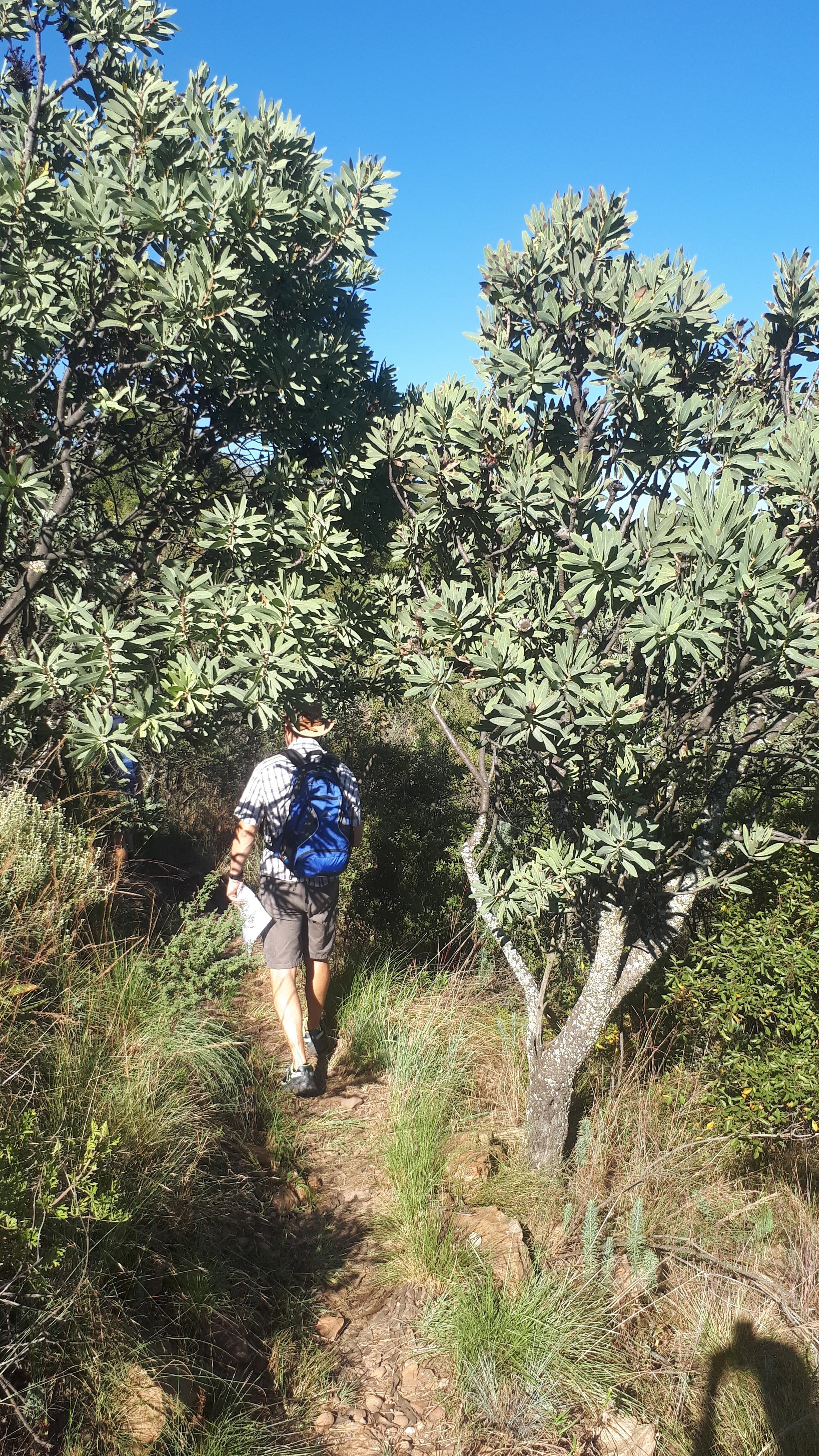Like many people who have lived in Johannesburg for many years (some even their whole lives!) I had never visited the nature reserve in the heart of Johannesburg.
I had heard so much about it - the beautiful views, the amazing birdlife (over 200 spp), the incredible flora and the rich history that this nature reserve held so I was so excited to finally visit it. I met with a group of friends in the Marks Park Sport Club parking lot off Judith Road and we crossed carefully to enter the Main Gates framed by stone walls.
The reserve has recently changed its opening times to every Sunday morning from 8 to 11.30am. Visitors are welcomed on arrival by volunteers and given a map so that they can explore the trails at their own pace. The cost is R80 per adult and R40 per child and all proceeds are used towards the maintenance of the Park. Guided tours for small groups can be arranged.
The Central section was proclaimed a nature reserve in 1959 and is a declared national heritage site. The 50ha area can be explored through pathways and there are information boards detailing the heritage and history of the area as well as the fauna and flora to be found there.
The reserve is made up of three sections namely Melville Koppies Central, Melville Koppies East and Melville Koppies West. The East and West sections are open public space and access is not controlled. The East side is only 10ha in size and is frequented by dog walkers while the West section is 100ha large and borders the Westpark Cemetery. There are security issues here so it is advisable to only hike in groups with security. I was surprised to see security guards actively patrolling the nature reserve (Central) when we visited on Sunday and this really added to a sense of safety which is always a concern when visiting public spaces in Johannesburg.
Map from the Melville Koppies Website (www.mk.org.za/mkcal.htm)
Map of Melville Koppies Central Walking Paths
More information on the geology of the reserve can be found on their website www.mk.org.za
Vegetation
The vegetation of the Koppies is entirely indigenous and is a remarkable example of the richness of highveld grasses, flowers, and trees so close to a city centre. The variety of the flora can be seen in the 500 identified species within the eight undisturbed plant communities that have been identified. There are also 56 species of grass recorded and the dominant trees include Acacia robusta, Acacia caffra, Euclea crispa (Blue Guarri), Celtis africana (White Stinkwood), Brachylaena rotundata and (Mountain Silver-oak). The Protea caffra and Mundelea sericea (Corkbush) were also lovely to see.
Along the western boundary where the Westdene Spruit flows a beautiful riverine forest can be found with large Celtis africana (White Stinkwood), Combretum erythrophyllum (River Bushwillows), Olea europea (Wild Olive), and Kiggelaria africana (Wild Peach). The trees were planted in the 1960s to show people how beautiful our indigenous trees are. This part of the reserve is known as the Arboretum and was a highlight for me - the flowing water is calming and the trees beautiful and shady.
Water
This stream, the Westdene Spruit, is one of the many streams flowing north from the Witwatersrand watershed. Among them are the Braamfontein Spruit and the Jukskei, and they all eventually join the Limpopo River, which enters the Indian Ocean at Xai-Xai in Mozambique.
History
Melville Koppies carries evidence of ancient hunter-gatherers, early farmers as well as the first iron-age miners of the Witwatersrand. In 1989 Professor R J Mason published a "Guide to Archaeology Sites: Johannesburg". The purpose of the paper was as much to inform and educate the public as to make a plea for greater awareness of the heritage we are losing.
He identified seven archaeological sites on what we call Melville Koppies Central: African Iron Furnace Models; A second Tswana Iron Furnace; Tswana hut floor and pottery - 300 years old; 1880s gold prospecting; 1900s gun emplacement and Early 1900s quarries. There are information boards and examples of some of the tools and implements on display at the lecture hall.
The fascinating history of how the original Braamfontein farm passed to Louw Geldenhuis during the gold rush in 1886 and how the northern suburbs evolved out of this can also be viewed on an information board at the lecture hall.
Volunteers
The nature reserve would not be what it is today without the involvement of passionate and dedicated volunteers. The Melville Koppies Management Committee works hard to maintain the paths, control alien invasive vegetation, pick up litter and control illegal access to maintain the reserve on an ongoing basis. They also are always looking for ways to raise money for the reserve so that the salaries of the staff they employ can be paid as well as the additional security they hire.
Richard Hall devoted over 25 years to the maintenance of Melville Koppies and together with David Mpilo, a Council worker they tackled projects of cleaning, weeding and restoring the reserve. Wendy Carstens began to work with Richard Hall from 1997 and is still actively involved today. She received the honorary Ellen Kuzwayo award from the University of Johannesburg for ‘Her commitment to conservation and tourism at Melville Koppies’.
How can you help
You can help firstly by visiting (have you?) and also by making donations to Melville Koppies (bank details on their website) or by registering them as a MySchoolMyVillageMyPlanet beneficiary.
Contact Wendy Carstens wendavid@mweb.co.za for further information. www.mk.org.za
We loved our time spent at Melville Koppies and will definitely be back again! Thank you to all those involved in the upkeep and running of this historical and ecological gem.








